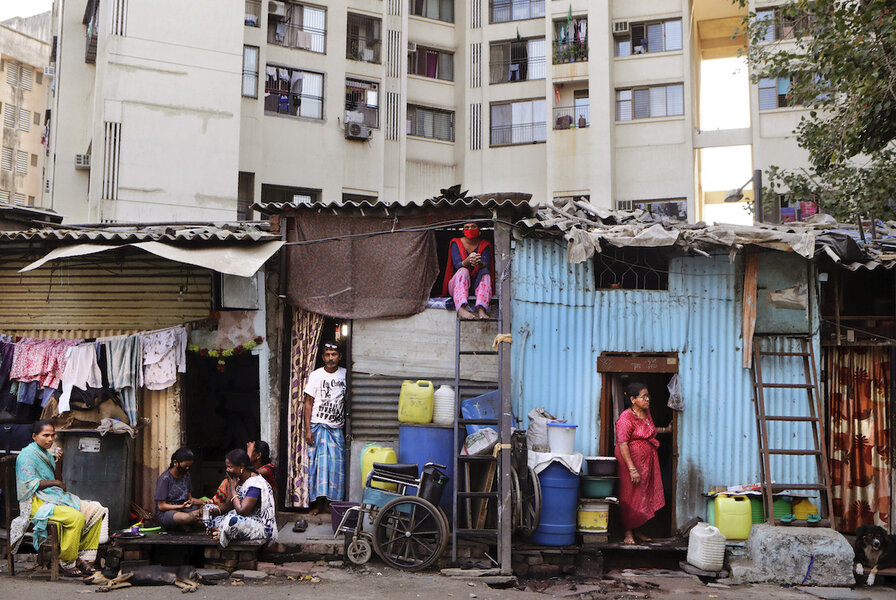It is indeed a heart wrecking thought about how some of
us have it super easy in life, while some of us have an indefinite battle with
day-to-day struggles. It often happens, when I pass by a slum or a road-side
shack housing a poor family, I can’t help but wonder why the almighty couldn’t
have bestowed all of us with all the good things is life?
Well, we can’t do anything about that, but one thing we,
as a part of society, the government or the local bodies can do is ensure those
living in slums a better life or help rehabilitate them to sanitary places.
Slum Redevelopment
Very often the Redevelopment Programmes are merely a part
of election propaganda and have no practical on-ground implementation.
The redevelopment plans are aimed at breaking down the
slums and using the same land to build residential buildings which would be let
out for sale after providing accommodation to the people of the existing area’s
slums.
Even when these plans materialize, they take years to get
through the paperwork and commence construction, leave alone completion.
Meanwhile, the slums dwellers have no place to go and not enough resources to
rent out a new place, so they go and form slums elsewhere, making the entire
plan a futile one.
The redevelopment projects should be strategized in a way
that the constructers provide monthly rent to the dwellers for seeking a
temporary location. Moreover, after completion of the redevelopment first
preference must be given to those who had been occupying the land before construction
and houses be allocated to them free of charge.
The developers of these schemes must be mindful of
various factors like the slum dwellers demographics, if they are too old to
relocate there must be provisions made for the same or if they have very young
kids who would be deprived of education if they temporarily moved. Usually, all
these things aren’t taken into thoughtful consideration and the plan is just
rushed through, but it’s the moral responsibility of the local bodies to always
look out for their welfare especially when the dwellers are willingly to
cooperate with the constructors by giving up their lands temporarily.
Slum Rehabilitation:
Rehabilitation and redevelopment are two different
things. Rehabilitation deals with uprooting the slum and resettling them in an
entirely different place whereas redevelopment is developing the same places
from slums into residential areas.
Rehabilitation is primarily for those slums built on or
near railway tracks, railway platforms and bus stops. These shacks and slums
disrupt the day-to-day running of activities and essential services. It is of
utmost significance to remove the slums from there but then a moral
responsibility of the government to provide them a new place, failing which
they would resuming building homes on public property.
Given the overwhelming population of our nation,
relocating these dwellers has become a herculean task. The government must
identify key areas for repositioning the tenants but at the same time it
shouldn’t feel like they are dumping the occupants where there is lack of
sanitation and infrastructure.
The basic provision of amenities should be in place
before hand and then the government should further the agenda of
regularization.
Slum Regularization:
There are slums that take up a footpath and some that
take up big chunks of the city, in such a scenario it is difficult to
rehabilitate the entire community or engage in redevelopment. The government
then resorts to regularization and part-by-part development of these areas.
The first step should be to ensure sanitation and
organize weekly cleanliness drives by engaging the entire slum. Providing clean
drinking water for the members and setting up monthly ration shops within the
slums would be a step in the right direction. Free schools for the slum
dwellers must be developed and they must be encouraged to educate themselves
and their families for a better future.
A frequent health camp must be set up to prevent the
spread of any diseases and a body of representatives from the local government
in collaboration with a few senior slum dwellers must be created to look out
for the slum, improvise their standard of living, settle all minor disputes,
and spread awareness.
After achieving the basics, the new formed body must be
allocated with resources to mend infrastructure, for example a few common
functional toilets with flushes should be built, drinking water taps could be installed,
along with a few bathing areas.
Slowly but gradually, the focus must shift from infrastructural
improvements to societal amends. NGO run schools and skill development classes
must be encouraged. The dwellers must be motivated to seek higher education to
improve their lifestyles by seeking for better jobs.
In short, the slums must be transformed into colonies
that our complete within themselves. These slums have for long been a cause of
concern, but it seems possible to regulate these changes which not only will
add to the beautification of our cities but also help lift the marginal section
of society.
Written By - Tushna Choksey






.JPG)




0 Comments